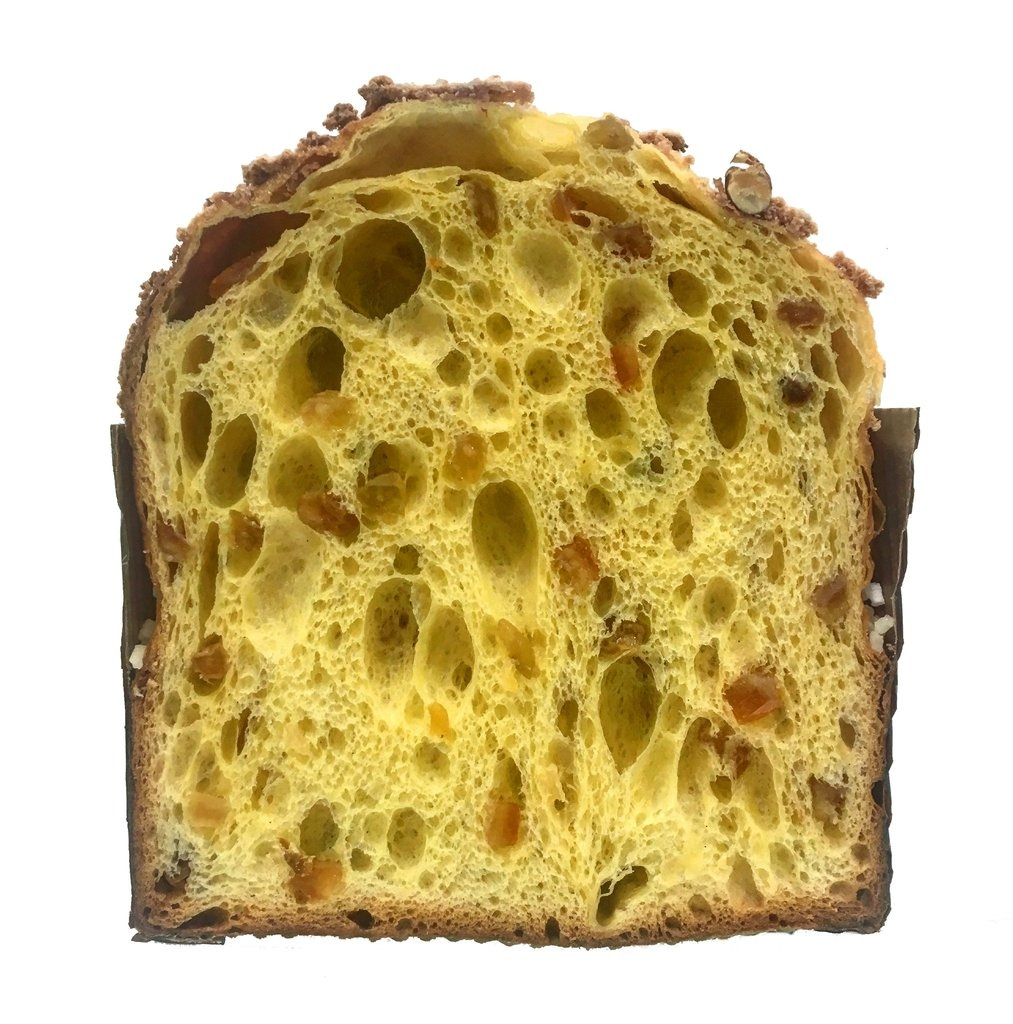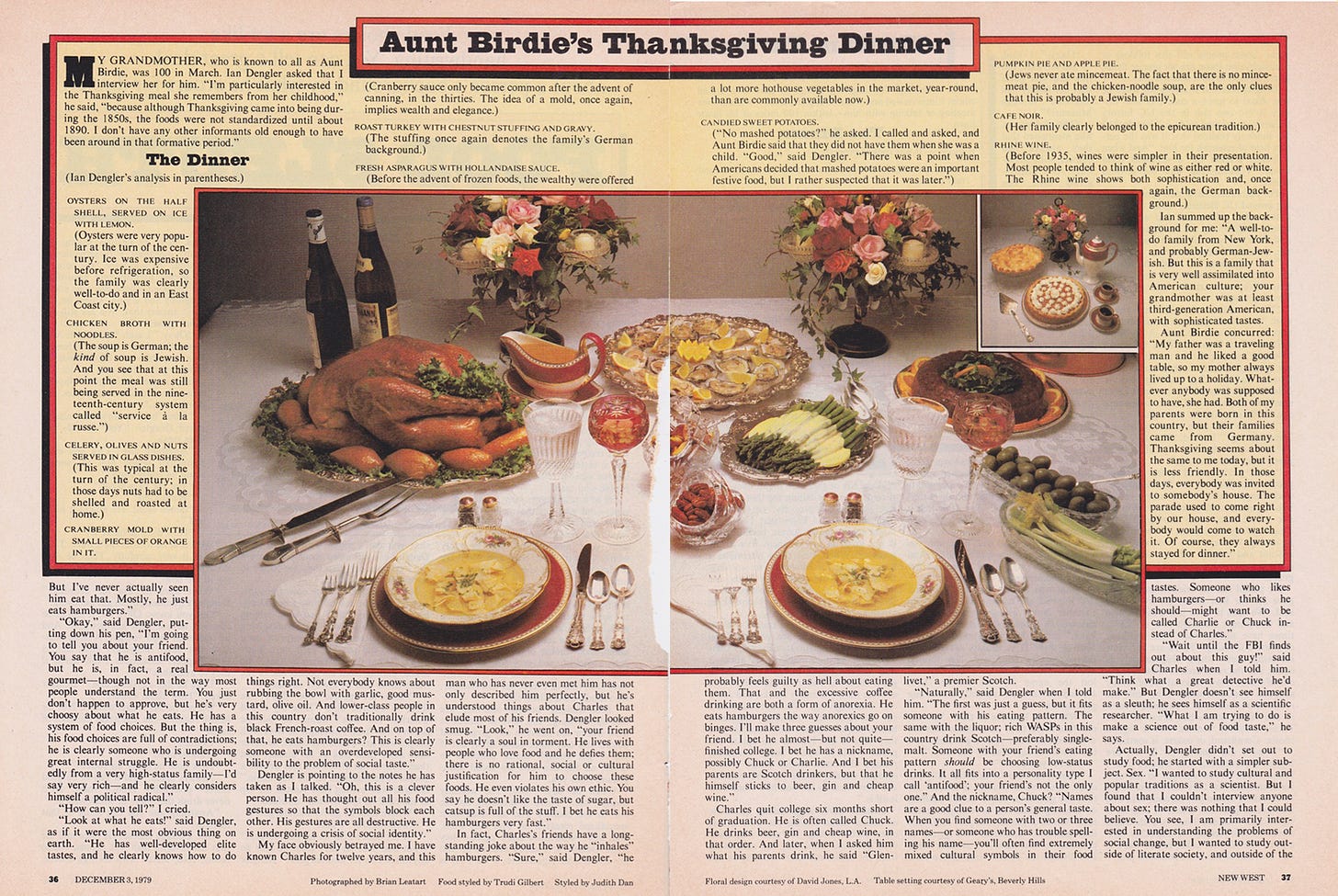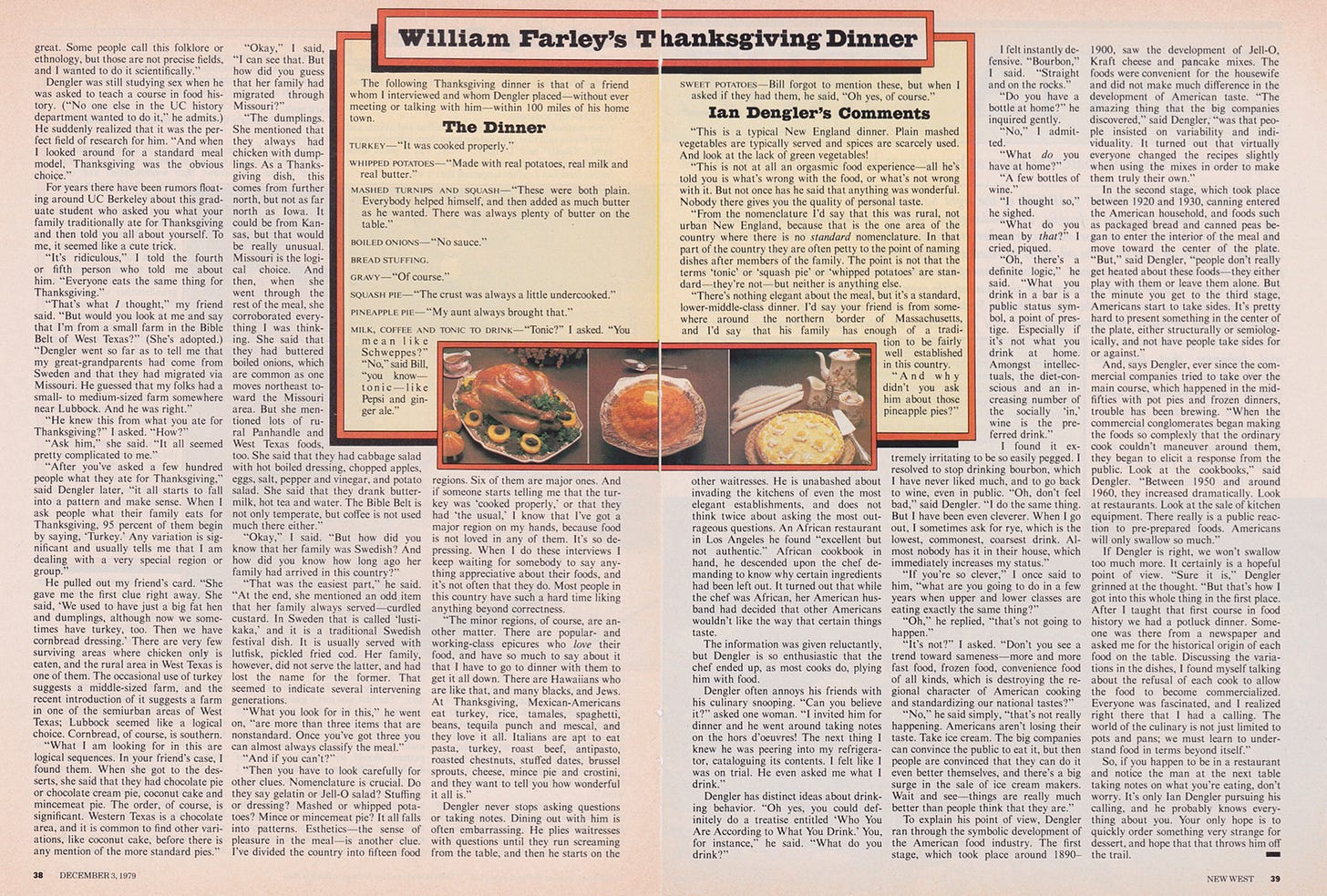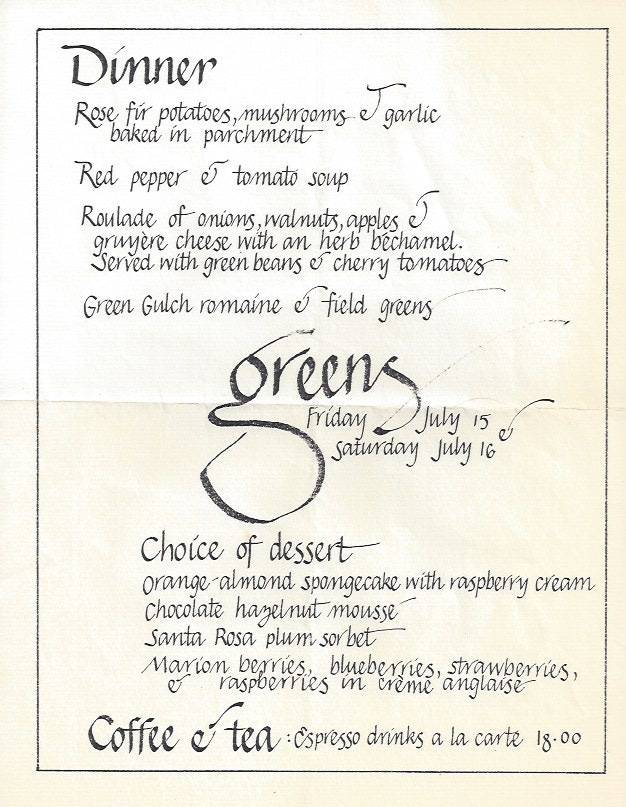Roy Shvartzapel is, by his own admission, crazily obsessive. He’s the kind of person who will spend an hour answering a single question. The kind of person who, when he discovers a confection he doesn’t understand, will spend years figuring it out.
“Panettone,” he says, “defies every rule of baking.” So he hitchhiked to Brescia where Iginio Massari, the world’s great panettone master, plies his art. And begged him to take him on as an apprentice.
When you taste Roy’s Panettone, you will be grateful that he did. His Italian Christmas bread is gossamer light and seems to simply evaporate in your mouth, leaving a delicious trail of flavor in its wake and the slight crackle of the crunchy topping.
Irresistible.
I’ve always believed that you could tell the entire story of America by listening to the food. And also that by watching what people eat you can find out almost everything about them.
But Ian Dengler proved it. Which is why this article, one of the first long pieces I ever wrote, has always meant so much to me. I spent hours listening to Ian talk about his research. (And later went on to write a few more articles about him; one piece chronicled what our ice cream choices reveal about us. I don’t know if it’s still true, but at the time, if coffee was your favorite flavor you were almost certainly from New York City.)
This research took my breath away. It still does.
Ian, I’m so sorry we’ve lost touch. If you’re still around, please reach out. I miss you.
“What’s in your refrigerator?” That’s a question food writers are invariably asked. My first answer is always “lemons, lemons and more lemons.” I am never without them. I included an entire chapter on lemons in my first cookbook. Asked to name a seminal dish in the finale of last season’s Top Chef Masters, I chose lemon souffle. And I was surprised into shouting “I am the Queen of Lemons,” on another season of Top Chef Masters. So you will not be surprised to learn that I have serious opinions about lemonade.
Great lemonade is much more than refreshingly delicious; it is also extremely good for you. In addition to containing loads of infection-fighting vitamin C, lemon juice is an antioxidant and very effective in times of gastric distress. But please, when life gives you lemons, make better lemonade.
The first important thing to know is that the best flavor in a lemon is hiding in the peel, which contains all that wonderful lemon oil. If you’re going to take advantage of this, buy organic lemons or scrub conventional lemons very well before removing the zest.
But here’s the problem: just below the bright yellow zest is the evil white pith. It is very bitter; crush it into your lemonade and within a few hours your wonderful drink will become quite unpleasant.
Simple syrup (sugar dissolved in water), is one of the secrets to great lemonade. But if you infuse the syrup with lemon zest you get the complexity of the zest without the pithy bitterness - and a very sunny color.
Lemonade requires a lot of juice. A good lemon will give you a quarter cup of liquid. But few are so succulent, and if you have unfortunate lemons you can increase your odds by rolling the lemon beneath your palm to break down the cells. Another trick: microwave them for 20 seconds to shock them into relaxing and releasing more juice.
Better Lemonade
Serves 2
½ cup sugar
½ cup water
4-6 lemons, enough to make a cup of lemon juice
2 cups water
2 sprigs mint (optional)
Make syrup: With a sharp knife or a vegetable peeler, remove the zest from the lemons, being careful to leave all the white pith behind. Mix sugar and water in a saucepan and bring to a boil. Simmer, stirring, until the sugar is dissolved. Remove from heat, toss in the lemon zest and allow to cool.
Squeeze lemons: Squeeze enough lemons to yield a cup of fresh juice.
Mix to taste: Strain the sugar syrup; it should be a lovely yellow. Add half to the lemon juice, along with the water, and keep adding more until it is sweetened to your taste. (The strained syrup will keep almost indefinitely in the refrigerator.)
Serve: Pour over ice cubes and serve, garnished with a sprig of mint or a slice of lemon.
Want to hear more about my lemon obsession? Tune in to Ingredient Insiders
This is a menu from around the same time the Food Sleuth was working his magic. And Greens certainly is a magical place (opened in 1979, it’s still going strong). Perched on the edge of San Francisco Bay it is a large, spare, serene space looking out at the water. The sophisticated vegetarian menu was truly revolutionary for its time when most vegetarian restaurants were serving a high-minded version of sludge. (I particularly remember a place called Brownie’s on the site that later became The Union Square Cafe.)
Originally part of the San Francisco Zen Center, early Greens employees were all practitioners of Zen. Their vegetables came from Green Gulch, the community’s organic farm. And the wonderful Deborah Madison, who has gone on to write so many seminal cookbooks, was the restaurant’s first chef.














Oh how I’ve missed you, Ruth! Love this idea. Especially now when we are so hungry for anything nourishing and positive. Loved the Dengler article. He should become a contributor - would be fascinating.
Great to see Roy's recommended. We were introduced to his delicate puffs last year when a generous friend dropped off a quarter each flavor. This year, without knowing it, my husband and I each ordered two of Roy's panettone on pre-sale. I will never, ever doubt whether I married the right man.